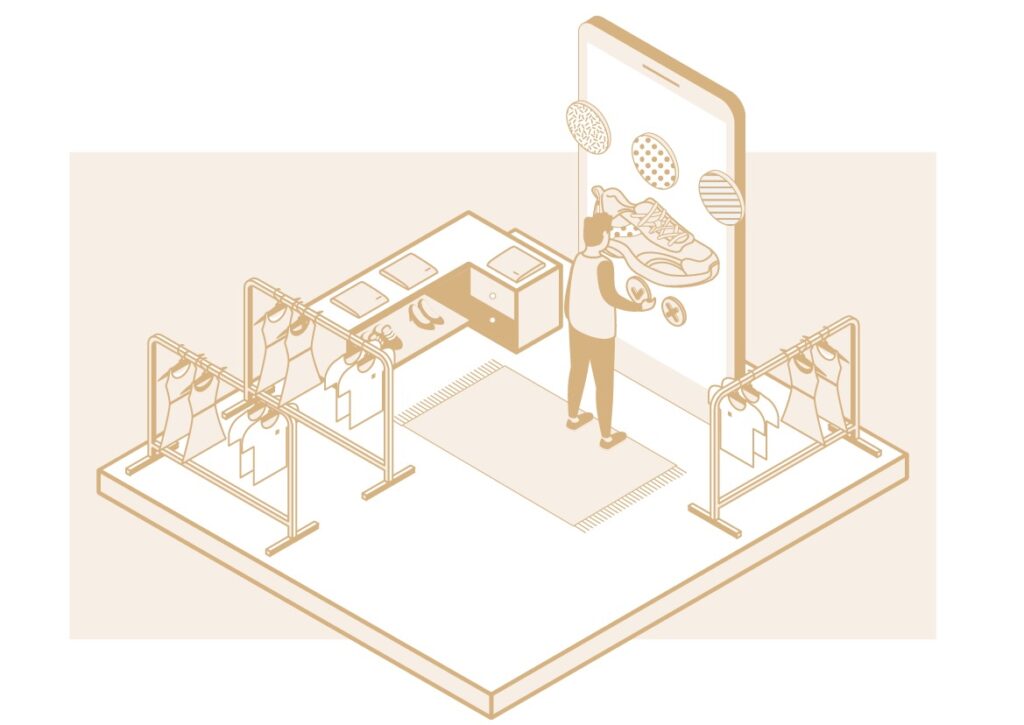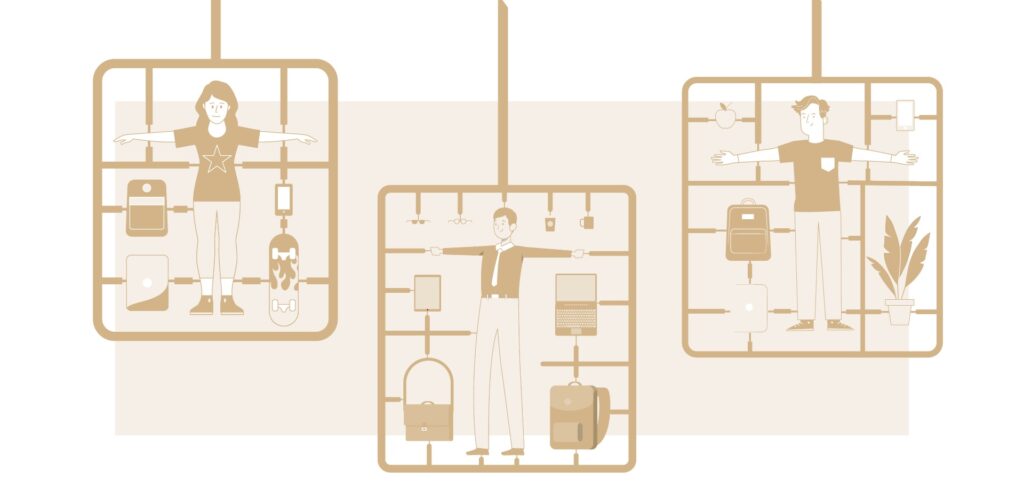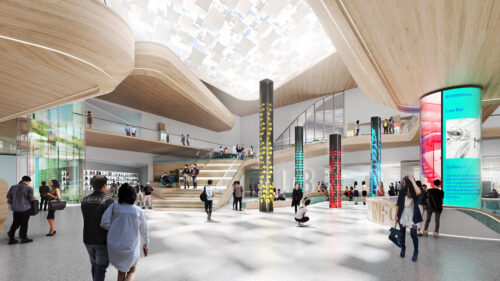Why You Should Take Things More Personally

Incredibly, Amazon will be 30 years old next year.
It was 1994 when Jeff Bezos decided to quit his job and found the Amazon Bookstore in his garage. The rest, as they say, is history.

Amazon’s arrival not only kick-started e-commerce but also introduced the world to the ‘recommendation engine’ and, with it, the ability for companies to personalize customer communications at a vast scale.
Now, every customer could have a different, personalized shopping experience and set of recommendations due to Amazon’s algorithms reacting on-the-fly to a customer’s browsing and past-purchase behavior.
Personalization works. Consumers place a higher value on personalized experiences, which they purchase more readily and remember for a longer duration compared to a generic approach.
In the e-commerce toolbox, such personalization techniques are now ubiquitous, but the same overall principle is being applied more broadly across a whole host of real-world experiences. How do you make that digital personalization work in the real world? How can you personalize a visit to a gig or a museum, or a hotel? Below we set out some (personal) perspectives on what this new frontier looks like.

3 Principles of Personalization
1: Simplicity
If we wind the clock back 30+ years to the day Amazon first came into being, personalized messaging was largely the preserve of direct mail – the OG of direct–to–consumer marketing. Personalization was often very basic but no less effective for it.
The vast majority of direct communications at the time boiled down to just a “Dear <firstname>” letter. Because we’re hard-wired to respond to personal greetings from birth, even this simple act ensured a level of cut-through that other techniques struggled to match. So principle number one is to keep things simple and first build a level of basic trust between you and your audience.
After addressing them by name, some sense of their location or circumstances is another easy yet effective way of making people feel like individuals and not marketing segments. One of the most immediate and readily-achievable ways real-world venue owners can do this is by simply recognizing if this is someone’s first visit or not. Replacing a generic “welcome” with a more personalized “welcome back” as they pass through the ticketing gates goes a long way to making a consumer feel recognized and their loyalty valued.
2: Relevance
Amazon made enormous leaps in the first decade of e-commerce by interpreting an increasing number of different data signals into evermore sophisticated purchase recommendations. Cookies even allowed us to track off-site behavior and inject little ‘nudges’ via remarketing display ads on other sites that featured products you’d previously viewed.
Arguably though, the customer experience wasn’t perfect, as it was interpreting simple ‘glances’ as possible purchase intent and, in doing so, mistaking basic research for relevancy. To make matters worse – as anyone who’s bought gifts for friends and family online will know – the subsequent recommendations you receive get heavily skewed and chase you around the internet via remarketing ads and follow-up emails. It’s like a shopkeeper in real life came running after you down the street, carrying the last item you looked at to try and catch a sale.
The burgeoning streaming media services were starting to recommend which songs, films, and TV shows we might want to consume next. Emerging social media networks also began to actively ‘curate’ which articles, updates, and stories we saw first, second, third, or sometimes … never.
It’s often hard to appreciate the levels of sophistication at play here until you try the ‘logged out’ version of YouTube or your favorite online news source and experience firsthand how ‘alien’ it feels.
Similarly, it’s hard to imagine a world without the Spotify “made for you” playlist feature that serves up a never-ending personal radio station of song after song that matches your vibe with uncanny ability. These curated ‘feeds’ reduce the ‘decision fatigue’ inherent when faced with almost infinite inventory, transform the impersonal into the personal, and instantly become more relevant to the end user.
The pursuit of personal relevance isn’t just limited to the digital world. As aspects of manufacturing have become digitized, personalization has increasingly become part of the product experience, too – allowing people to influence the design of the things they wish to buy, like:
- Specifying a bespoke IKEA kitchen that’s tailor-made for your home
- Configuring the perfect car before you even visit a showroom
- Personalizing a candy bar gift with the recipient’s name
- Ordering one-off customized sneakers that no one else will be wearing
- Crowdfunded books with supporters’ names on the endpapers

3: Consistency
When you coordinate these different techniques carefully, you create the third important principle of personalization – consistency.
As customers move through the classical stages of awareness, consideration, purchase, and consumption, their experience at each stage must be additive to the last.
As in real life, the more we get to know someone, the more familiar we start to feel and the more noticeable it is when things get forgotten and feel like a backward step—maintaining a feeling of genuine connection between interactions – even when months apart – is the key to any good relationship.

How we think about personalization in real-world experiences.
At Journey, we start with these principles – simplicity, relevance, and consistency – and apply them to the problems our clients need to solve.
In hospitality, we reframe the familiar hotel stay by shifting the focus from brand “storytelling” to creating personalized opportunities for guests to live their own stories.
Before guests even get near the reception desk, we envision rooms that have been carefully curated specifically for them. This might involve simple things like stocking the minibar with their favorite snacks or selecting the colors of the cushions, through to providing an in-room tablet that offers personal and relevant suggestions for nearby places and activities that align with their interests. We’ve even given rooms a genuine ‘personality’ by allowing guests to speak to their room via advanced AI to create personal concierges.

In venues, attractions, galleries, and museums, interactive displays allow visitors to follow their own narrative pathways and choose what they want to consume. With ubiquitous smartphones, we feel confident proposing companion experiences that are triggered in situ and allow for more personal exploration away from the subject matter. Or, if we want to keep our guests ‘eyes on the prize’ then personalized audio is another under-utilized technique to deliver personalized experiences at scale. The explosion in podcast popularity in recent years is a great example of more personalized ‘deep dive’ content resonating with consumers.
Your smart ticket becomes a ‘token’ which recognizes your ‘membership’ to the subject matter and grants access to follow-up experiences to enjoy at home, either to cover the bits you may have missed or to offer more on the areas you clearly enjoyed. They can also be the keys to a community of other ‘fans’ of the subject matter and connect you to these kindred spirits. All of these simple ideas increase relevance and improve engagement metrics enormously.
The latest developments in advanced AI can remove the UI and language barriers and allow visitors to simply talk to the subject matter in a language of their choice and enjoy their own personal guide.
Finally, there’s retail, where we started, and a sector that’s long recognized the need to blend strong storytelling with personalized service.
Post-pandemic retailing figures reveal that while it’s clear we love the convenience and immediacy of online shopping (and came to depend on it for a while), we also covet the experience of shopping in person, as we return to the malls and stores in numbers.
Yet those three-or-so years of relying on e-commerce have created some irreversible expectations of enriched storytelling and personalized experiences as we touch, hold, and feel a potential purchase. We want to see those personalized aspects come to life in-store, not just in-app.
At Journey, we believe these are opportunity areas for our clients, and we’re already helping many to take their own step into the future, as Jeff did with Amazon 30 years ago.




 Jules Coke
Jules Coke





